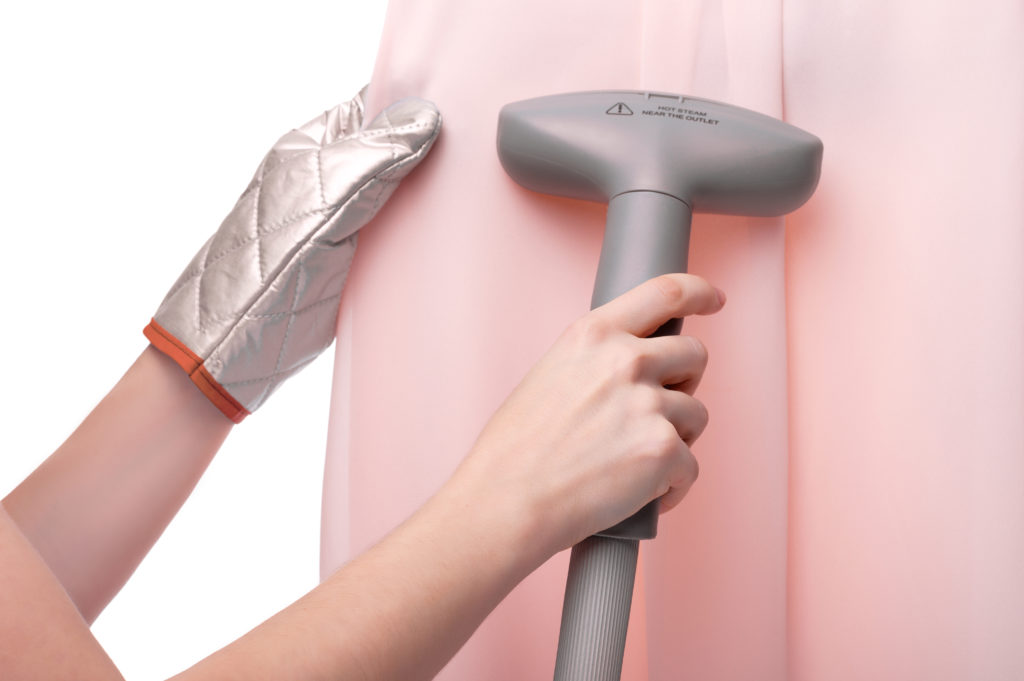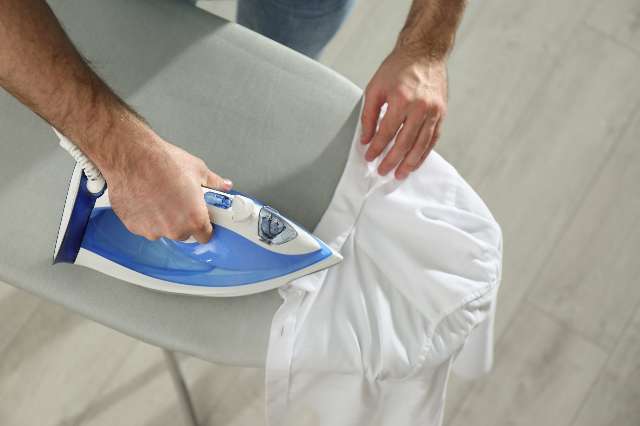
Dry Cleaning is a common errand, but we rarely consider how our most prized shirts, jeans, and uniforms are actually cleaned when we do it. Water is the cleaning solvent when you do your laundry at home in the washing machine. However, many delicate fabrics have poor water resistance. Wool and water, for example, do not mix. Water also fails miserably to remove a wide variety of stains.
If you’re like most homeowners, you probably have a few pieces of clothing in your closet that require dry cleaning. But have you ever wondered how this unique process works? In this blog post, we will take a closer look at the dry cleaning process and discuss some of its benefits. So sit back, relax, and enjoy learning about one of the world’s oldest professions!
What is Dry Cleaning?
The phrase “dry cleaning” is a little misleading because it isn’t genuinely dry cleaning. The word “dry cleaning” is used to describe a method of cleaning clothing without the use of water. Instead of cleaning using water, this procedure submerges the garment in a liquid solution. Thus, the term “dry” is used to describe it. This is also more environmentally friendly than using a regular washing machine or hand-washing your clothes, which uses a lot of water.
On the other hand, the dry cleaning industry uses chemical solvents to remove grime, grease, and stains instead of traditional cleaning methods like soap and water. Initially, kerosene was employed as a solvent, but it was flammable. Dry cleaners began using perchloroethylene (perc) as a solvent after World War II, and it quickly became the industry standard due to its efficiency. Chemical extraction and pressing remove wrinkling from garments after washing them with the solvent. To reuse the solvent, the garments are washed in it, and then the dry cleaning solvent is extracted in an extractor (so that it does not evaporate into the air and cause pollution). Afterward, the clothing is pressed to resemble new ones.
Additionally, types of fabrics such as taffeta, silk, velvet, or wool should be dry-cleaned by experts unless the care label states otherwise. Dry cleaning suede and leather clothing is the finest option for maintaining the items’ original state. This procedure is safe for delicate textiles like lace and voile since it employs low temperatures. Because it inhibits stretching or shrinking, it is ideal for fabrics that can’t be washed at home, and it retains the best possible condition of the material.
History of Dry Cleaning
Thomas Jennings, a tailor in New York City in 1820, was trying to find a way to clean his customers’ delicate clothes without destroying them. “Dry-scouring” was the name given to this method by the U.S. Patent and Trademark Office one year later. First African American to possess a U.S. patent according to IPOEF: Jennings’s patent. Although it was destroyed in a fire in 1836, the method utilized in modern-day dry cleaners closely follows his original approach.
When a maid working for him spilled kerosene on an oil-stained linen tablecloth four years later, Jean-Baptist Jolly, a dyer in France, made the same discovery, Enviro Forensics says. He observed that the stains on the tablecloth had vanished once the kerosene had evaporated. It was Jolly who saw the potential in this finding and started the first dry cleaning shop in France.
Using dry cleaners’ petroleum-based chemicals (such as kerosene and gasoline) was quickly discovered to be a bad idea. Using these compounds for long periods might be dangerous, as they are highly combustible. The first non-petroleum dry cleaning solvent was developed by an American dry cleaner, William Joseph Stoddard. Still, it was Michael Faraday who found perchloroethylene, the solvent of choice for the majority of dry cleaners today.
When it comes to volatile organic compounds, perchloroethylene (or perc, as it’s more often known) is a dangerous one. The land and groundwater around a dry cleaner can be contaminated even by modest spills. As a result, dry cleaners are subject to many EPA regulations when it comes to using perc.
How Does Dry Cleaning Work?
Tetrachloroethylene (also known as “perc”), or perchloroethylene in the dry cleaning business, evaporates quickly, unlike other compounds commonly used in the washing machine to remove dirt and stains from garments.
Dry cleaners clean your garments with large, high-tech machines. Suppose you are curious about why dry cleaning machines do not need water. Assuming that’s true, they’re likely using an industrial cleaner that evaporates considerably more quickly than plain old tap water. Clothes are cleaned and sanitized using a solvent that is cycled throughout the process. To make it usable again, the solvent is distilled and purified.
Dry Cleaning Process
Have you ever wondered how dry cleaning is done? Dry-cleaning businesses follow a set routine when it comes to operations. Here’s a breakdown of how each piece of clothing is cleaned:
Step 1: Garment Tagging
Dry cleaners tag each item of clothing with a unique number when you initially drop it off. Keeping track of customers’ apparel helps dry cleaners avoid the difficulty of handing out the wrong goods to customers at the end of the process.
Step 2: Garment Inspection
All clothing is evaluated for flaws such as rips and tears prior to cleaning. Customers receive their products back, and any flaws are highlighted as they were already known before cleaning.
Step 3: Stain Pretreatment
The cleaner inspects the clothing for stubborn stains and treatments them before the solvent cleaning procedure as part of the inspection process. For the most remarkable stain removal outcomes, let the cleaner know exactly what created the stain to receive the best results. To protect delicate buttons and trim, a professional cleaner removes or covers them.
Step 4: Dry Cleaning Machine
Soiled garments are placed in a dry cleaning machine and cleaned. Clothing is gently stirred as the organic solvent of choice (or water if your dry cleaner employs wet cleaning methods) is pumped in. Despite their size, these machines perform the same primary spinning function as our domestic washing machines. It is possible to arrange dry-cleaning machines to spin at a slower speed and to regulate the temperature better.
Step 5: Post Spotting or Second Inspection
The chemical solvent used in the dry cleaning procedure is excellent at eliminating oil-based stains. However, not all stains can be effectively eliminated. As a result, every piece of clothing is post-spotted to check for any lingering stains. Steam, water, or even a vacuum might be used to remove the stains. In addition, all buttons, embellishments, and seams are checked to ensure they are in working order. During the initial inspection, any removed embellishments and buttons were reattached.
Step 6: Finishing Touches
Finally, the garment is ready to be worn. Removing creases, reattaching buttons, and fixing repairs are all examples of this. Items are then returned to the customer in a hung or folded state. It is simply for your convenience that the plastic bags provided are there. Take them off as soon as possible to avoid ruining your clothes with stored moisture.
Getting Best Results from Dry Cleaning
- Read the label. Check the label on your clothing to see if dry cleaning is recommended. There’s a circle on the care label for “dry clean only,” and a letter within the circle may specify what kind of dry cleaning solution is advised.
- Don’t remove the stains on your own. Removing a stain on your own is a common temptation when anything goes wrong with your clothing. If you’re tempted to try this, don’t. Instead, take it straight to your dry cleaner. Pushing the oil, color, or food further into the fabric is more likely to exacerbate the problem, making removal even more difficult or impossible.
- Tell your dry cleaner about the stains. Ensure to notify the dry cleaner of any stains before dropping off your garments. Many types of stains require pretreatment before being placed in the dry cleaning machine. You may help the dry cleaner choose the finest pretreatment solution for your garments by telling them what caused the stains (coffee, oil, alcohol, etc.).
- Take note of any special buttons or embellishments. Delicate decorations or buttonholes on some clothing require careful attention. Point them out and ask whether they can be protected or removed during cleaning because you’ll likely be dealing with a desk clerk rather than someone who actually cleans. Inquire if the service includes reattaching the objects.
- Don’t use at-home detergent soaps. Attempting to clean items that require dry cleaning at home is a waste of time. Dry-cleaning garments are done for a specific cause. You can buy laundry detergent that claims to dry clean in your dryer, but it’s best used for deodorizing and eliminating wrinkles. Unlike professional dry cleaners, they don’t remove stains as effectively.
- Don’t be shy to make special requests. When dropping off, make sure to point out any stains, sensitive fabrics, or embellishments. When it comes to dry cleaning, don’t take a chance or just think everything will be fine. You and your clothing will be happier if you and your cleaner have a conversation.
- Remove the plastic covering as soon as you arrive home. You should remove the plastic covering from your dry cleaning clothes when you arrive home, but the clothes should not smell of solvent or perc when they are returned from the dry cleaners. It is a clue that the dry cleaner is not adequately cleaning or filtering the solvent they use if they do. If this is the case, then it’s time to switch dry cleaners.
Frequently Asked Questions
How often should you have your dry-clean-only apparel professionally cleaned?
Ideally, you should have your dry-clean-only apparel professionally cleaned at least three or four times a year. However, if you live in a particularly dusty or smoky environment, you may need to clean it more often. If you take good care of your clothing and have it cleaned regularly, it should last for many years.
Is it possible to use a clothes steamer on clothing that has been dry cleaned?
It is possible to use a clothes steamer on clothing that has been dry cleaned, but it is important to be cautious when doing so. Dry cleaning can sometimes leave clothing stiff and difficult to steam, so it is best to test the steamer on a small area of the garment first. If the steamer does not seem to be working well on the dry-cleaned fabric, it is probably best to avoid using it altogether.
Is dry cleaning better than traditional washing?
Oil and grease stains are more difficult to remove with a wet-cleaning method than with a dry-cleaning method. These can be difficult to remove with a standard detergent. Thus, a regular washing machine would do its job if your clothes have light stains!
Are the chemicals used in dry cleaning harmful?
Yes, according to scientists, dry cleaning is linked to many health hazards. Toxicity can spread to nearby places by releasing harmful compounds into the land, water, and air. On the other hand, toxic solvents are carefully recovered so that none escapes, and the facilities in question are equipped with ventilation systems to manage the procedure.
Dry cleaning is a popular way to clean clothes, but it can be expensive. In this post, we’ll look at how dry cleaning works and some of the benefits and drawbacks of this process. We hope that by the end of this post, you will better understand what dry cleaning is and whether or not it is the right choice for you.
If you are looking for a reliable dry cleaning service near you, you are at the right place. Sidepost provides professional dry cleaning services across Australia particularly the cities of Hobart, Perth, Sydney, Adelaide, Gold Coast, Canberra, Melbourne, and Brisbane.
Air Conditioning ( 3 )
Blinds installation ( 3 )
Building and Pest Inspections ( 4 )
Car Detailing & Car Wash ( 3 )
Carpet Cleaning ( 3 )
Carpet Installation ( 2 )
Custom Fish Tanks ( 2 )
Dry cleaning and ironing ( 3 )
Fencing Contractors ( 5 )
House Cleaning ( 7 )
House Painting ( 6 )
Ironing Service ( 1 )
Lawn Mowing ( 3 )
Pest control ( 2 )
Pool cleaning/servicing ( 3 )
Pressure Washing ( 2 )
Uncategorized ( 6 )
Professional Home Services at your Door
Get it all done with Sidepost - House cleaning, fencing, painting, and more.

